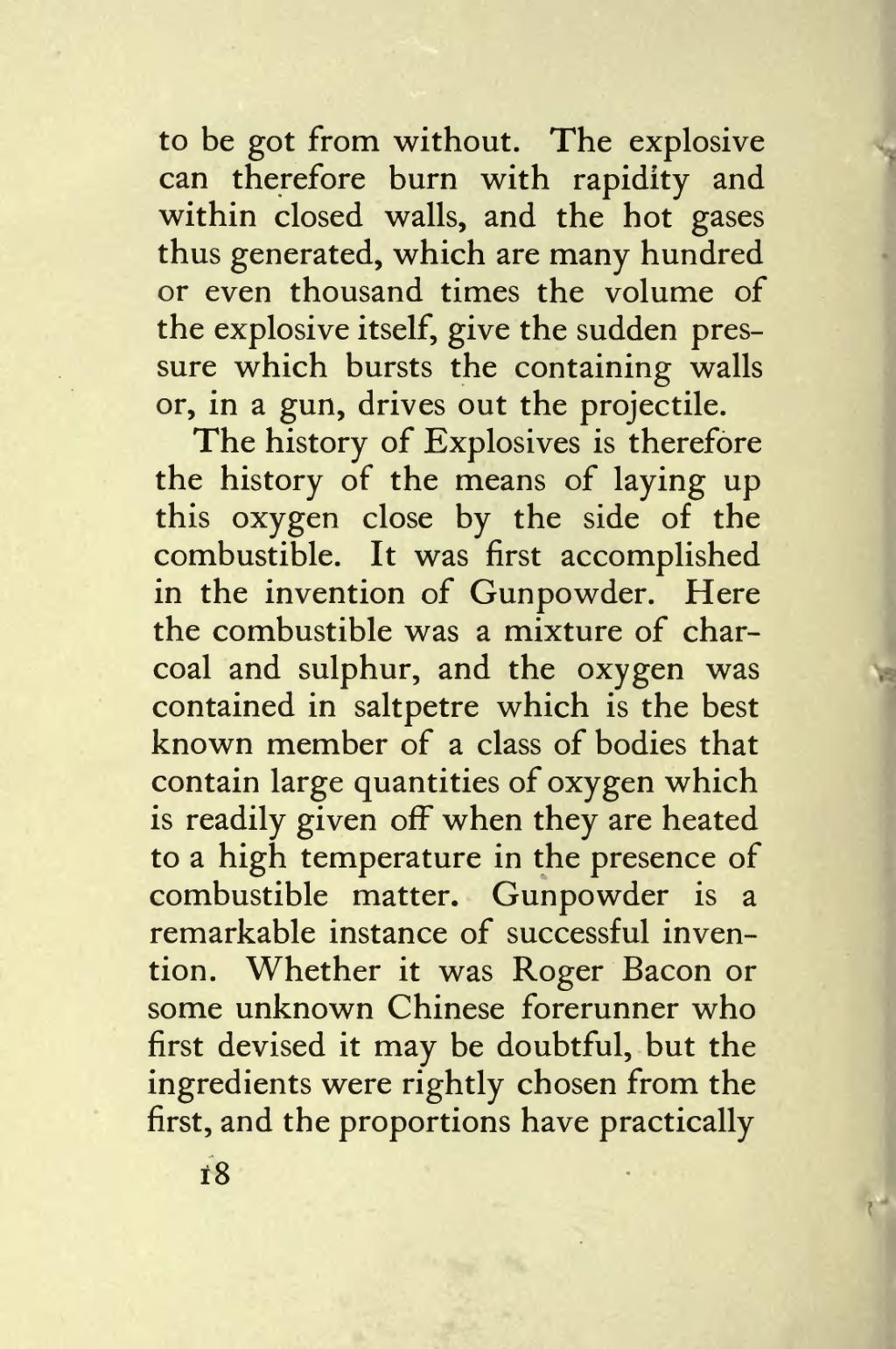to be got from without. The explosive can therefore burn with rapidity and within closed walls, and the hot gases thus generated, which are many hundred or even thousand times the volume of the explosive itself, give the sudden pressure which bursts the containing walls or, in a gun, drives out the projectile.
The history of Explosives is therefore the history of the means of laying up this oxygen close by the side of the combustible. It was first accomplished in the invention of Gunpowder. Here the combustible was a mixture of charcoal and sulphur, and the oxygen was contained in saltpetre which is the best known member of a class of bodies that contain large quantities of oxygen which is readily given off when they are heated to a high temperature in the presence of combustible matter. Gunpowder is a remarkable instance of successful invention. Whether it was Roger Bacon or some unknown Chinese forerunner who first devised it may be doubtful, but the ingredients were rightly chosen from the first, and the proportions have practically 18
